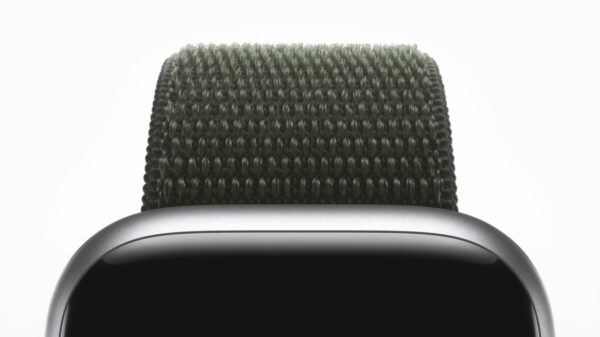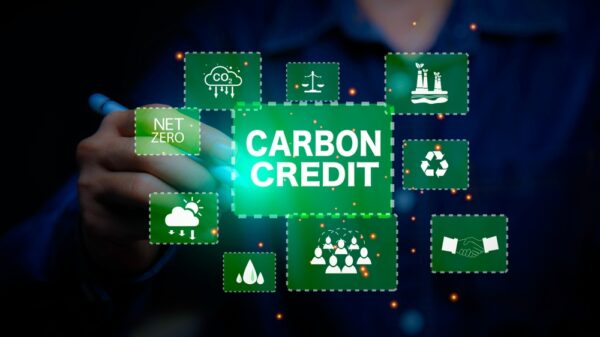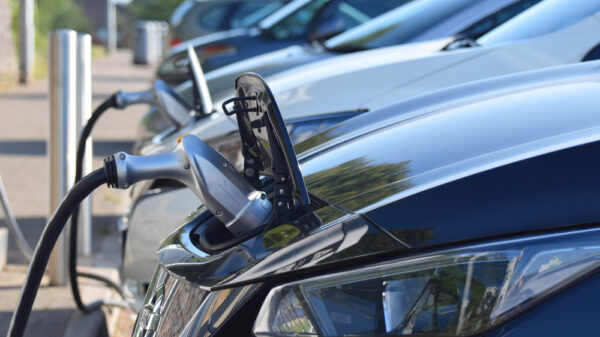Apple CEO Tim Cook promised Mother Nature that the tech giant’s phones, laptops, watches and the rest of its product line will be carbon neutral by the end of the decade.
Yes, you read that correctly.
In one of the few short films screened at Tuesday’s Apple event, its boss promised Mother Nature, played by Octavia Spencer, that all of the company’s devices will be carbon free by 2030.
After hearing the ambitious climate pledges, Spencer leaves the meeting warning: “Don’t disappoint your mother!”
While there is a lot of work to be done to reach those targets, the brand has already unveiled its first product that has achieved carbon neutrality in its watch series.
Sustainability Beat highlights the steps Apple has taken to create its first carbon neutral watch and reduce emissions across the rest of its product range.
Apple ditches leather
As part of its goal to make every product carbon neutral by the end of the decade, Apple has ditched the use of leather in its watch straps and phone cases. Instead, it has opted for a textile called FineWoven, made from 68% recycled material.
Apple vice president for environment Lisa Jackson said that while leather is a popular material, it has a “a significant carbon footprint, especially at Apple’s scale”.
“To reduce our impact, we will no longer use leather in any new Apple product, including watchbands,” she added.
Apple’s Sport Loop watch strap has also been redesigned with 82% recycled yearn and now includes material from discarded fishing nets.

“We’ve achieved an important milestone in making the world’s most popular watch carbon neutral — and we will keep innovating to meet the urgency of the moment,” added Jackson.
Subscribe to Sustainability Beat for free
Sign up here to get the latest sustainability news sent straight to your inbox everyday
Reducing emissions throughout the supply chain
Outside of leather, Apple unveiled it is focusing on reducing emissions throughout its supply chain.
Each carbon neutral Apple Watch meets the following criteria: 100% clean electricity for manufacturing and product use, 30% recycled or renewable material by weight, and 50% of shipping without the use of air transportation.

When combined, these could lead to a drastic 75% reduction in product emissions for each model.
Across its product lines, more than 90% of Apple’s suppliers have joined its ‘Supplier Clean Energy Program’, committing to 100% renewable electricity for all production by the end of 2030.
Reducing carbon footprint
As transporting products globally adds up to 9% to Apple’s carbon footprint, the company has been shifting to methods that are more environmentally friendly than air transport.
For the carbon neutral Apple Watch models, including watches and bands, the company will ship at least 50% of the combined weight using non-air modes, cutting total transportation emissions nearly in half.
Additionally, the packaging of all Apple Watch Series 9 and SE models has been redesigned for compactness, with a new smaller shape that allows for 25% more devices per shipment.
Recycling rare materials
Apple’s new AirPods Pro and iPhones are designed with numerous materials and features to minimise their impact on the environment, including the use of 100% recycled rare earth elements in all magnets and 100% recycled gold in the plating of multiple printed circuit boards.
The case also uses 100% recycled tin in the solder of the main logic board and 100% recycled aluminium in the hinge.
The brand has also redesigned packaging that eliminates the outer plastic wrap. On top of that, over 90% of the packaging is made using fibre-based materials, bringing Apple closer to its goal of completely removing plastic from all packaging by 2025.

Will Apple’s carbon neutral pledges balance future e-waste piles?
But not all initiatives are as straightforward. In a somewhat controversial move, Apple has announced its new iPhone will be USB-C compliant.
The cable, which is already compatible with other products, will also work on new versions of its AirPods Pro earphones and wired EarPods headphones.

Since 2012, every iPhone has used lightening cables despite its Macbook and iPads transitioning to the cable. Other technology outside of the Apple-verse, such as Androids, PC monitors and Nintendo devices have also made the transfer.
The move comes amid the EU standardising phone chargers across the region to reduce e-waste.
However, some warn it will lead to a rise in discarded cables in the years to come.
VMware Ed Hoppitt told Sky News it could create “mountains and mountains of e-waste”.
“Since the lightning cable was introduced with the iPhone 5 in 2012, countless phones, devices, headphones, adapters, and other accessories have used it,” he said.
“When Apple dropped the old 30-pin connector in 2012, they had sold 610 million devices that used it.
“Since 2021, they have sold over two billion iPhones alone.”
A green Apple?
The Verge science reporter Justine Calma noted to be wary of the brand’s green product changes. While the changes are positive, the technology brand selling more products than usual could increase its overall GHG emissions.
“Don’t get me wrong; it is important to reduce all those sources of greenhouse gas emissions,” said Calma.
“It’s just that the supposed sustainability of any single product doesn’t necessarily tell us how much progress the company is making overall toward its climate goals.
“A company might make a single product less carbon-intensive, for example, but if it winds up selling more of that product than it used to, it might end up pumping out as much or even more greenhouse gas emissions than it used to,” Calma added.










